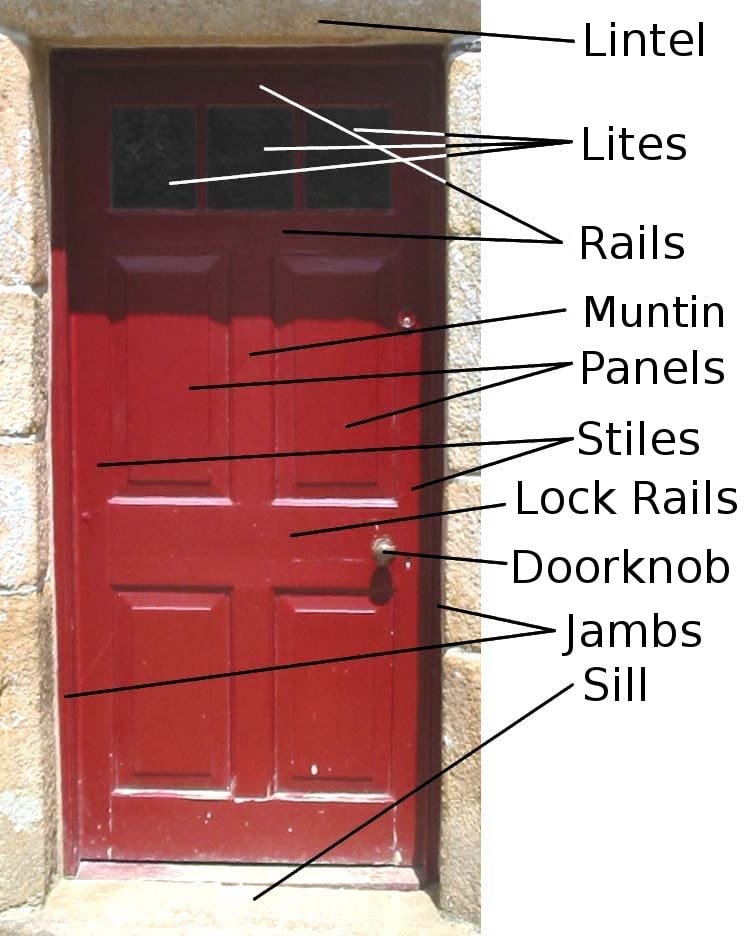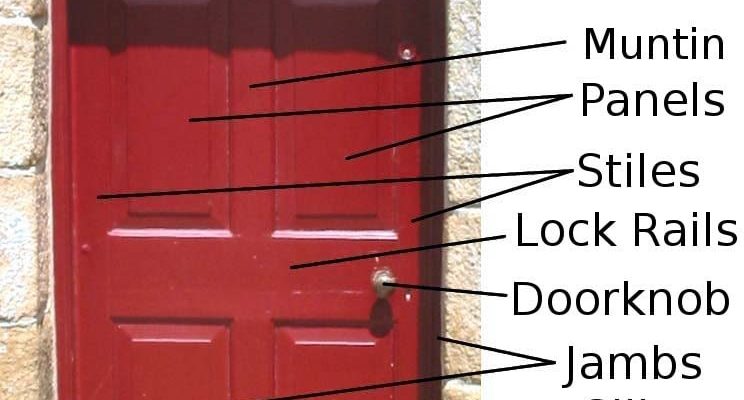
The door jamb plays a crucial role in ensuring that your door hardware aligns properly. If you’ve ever struggled to get a door to close smoothly or found yourself facing a jammed lock, you might be dealing with an issue related to the door jamb. Let’s dive into this essential component and see how it impacts your home’s door hardware alignment, why it matters, and how you can troubleshoot common problems.
What is a Door Jamb?
A door jamb is the vertical part of the frame that surrounds a door. It’s made up of two main parts: the hinge side, where the door is attached with hinges, and the strike side, where the lock and latch are located. Think of the door jamb as the backbone of your door—it supports both the door and the hardware attached to it.
There are also different components to a door jamb, including the header, which is the top section that spans across the doorway. This sturdy part keeps the door jamb from sagging and helps maintain the door’s structural integrity. Like the foundation of a house, a properly aligned door jamb ensures that everything functions just right.
Types of Door Jambs
Door jambs come in various styles and materials, depending on your needs. Here are a few types to consider:
- Wood Door Jambs: Common in residential settings, they offer great insulation and aesthetic appeal.
- Metal Door Jambs: Often found in commercial buildings, they provide extra durability and security.
- Adjustable Door Jambs: These are designed to accommodate different wall thicknesses, making them versatile for various installations.
The choice of door jamb can influence how well the door hardware aligns. A solid wood jamb might hold a lock tighter than a flimsy metal one, for instance. When installing a new door, consider how the materials and design will work together for optimal alignment.
The Importance of Proper Hardware Alignment
You might wonder why hardware alignment is such a big deal. Well, when your door hardware is aligned correctly, everything functions smoothly. Think about it: a mismatched lock can lead to a door that won’t latch, or a loose hinge might cause a door to sag.
Proper alignment affects everything from the lock mechanism to the door’s overall performance. If the hardware is off, you could face issues like:
- Difficulty in closing or opening the door
- Increased wear on the hinges and locks
- Increased energy costs due to poor sealing against the elements
Aligning hardware might seem like a small task, but it can make a world of difference. When everything fits together as it should, you’ll avoid unnecessary headaches—and likely save yourself some time and trouble in the long run.
How Door Jambs Affect Door Hardware Installation
Installing door hardware, like locks and hinges, begins with the door jamb. If the jamb isn’t level, plumb, or straight, it can lead to poor hardware alignment. Here’s what happens:
– Hinges: If the hinge side of the jamb leans out, your door will sag, leading to misalignment. This means you’ll struggle to close the door properly.
– Strike Plate: The strike plate needs to line up perfectly with the lock. If the jamb is bowed or warped, you’ll often find yourself fumbling to get the latch to catch.
– Spacing: Gaps between the door and the jamb can let drafts in and create security issues. Proper spacing is vital to prevent wear and tear on your hardware.
Here’s the thing: measuring and adjusting your door jamb during installation saves you from future frustrations that come with wonky hardware. Super important, right?
Common Issues with Door Jambs and Their Solutions
Even with careful installation, door jambs can encounter issues over time. Here’s a look at a few common problems and how to address them:
1. Warping: Exposure to moisture or temperature changes can warp wooden door jambs. If you notice your door doesn’t close properly, check for any bending or warping. You might need to replace the jamb or use wood filler and sand it down to adjust the fit.
2. Alignment Shifts: Over time, homes settle, which can shift door alignment. If your door is no longer closing properly, check the hinges and fix them if needed. Sometimes, adjusting the screws or adding washers can help realign the door.
3. Damage from Wear: If you see significant wear on the strike plate or around the lock, it might be a sign the jamb is out of alignment. Tightening screws and replacing worn parts can help restore functionality.
These issues not only affect how your door operates but also impact your home’s energy efficiency. Addressing them promptly is key to maintaining alignment and ensuring your door hardware works as it should.
When to Call a Professional
While many door jamb issues can be fixed at home, some problems might need a pro’s touch. If your door jamb has significant damage or if you find yourself feeling overwhelmed, calling a professional can save you time and trouble. They have the tools and expertise to assess the situation accurately and ensure everything is aligned perfectly.
Maintaining Your Door Jamb for Longevity
Taking care of your door jamb can extend its lifespan and keep your door hardware aligned longer. Here are a few tips to consider:
– Regular Inspections: Check your door jamb and hardware periodically for signs of wear or misalignment. Early detection can help you fix issues before they worsen.
– Weatherproofing: Seal any gaps with caulking to protect against moisture and temperature changes. This can help prevent warping and damage to the jamb.
– Lubricate Hardware: Regularly lubricate your locks and hinges to ensure smooth operation. This simple step can prevent unnecessary stress on the door and its components.
If you notice wear or misalignment, address it quickly. A few moments spent caring for your door jamb can save you time and stress down the road.
The door jamb is a fundamental part of your door’s structure that significantly impacts hardware alignment. From ensuring your door swings freely to keeping your locks secure, the role of the jamb cannot be overstated. By understanding its importance, identifying common problems, and performing regular maintenance, you can keep your door functioning smoothly for years to come.
Next time you find yourself struggling with a door, take a moment to consider its jamb. It might just be the key to a quick fix and a smoother opening. Remember, a little attention goes a long way in maintaining your door’s health and performance.
